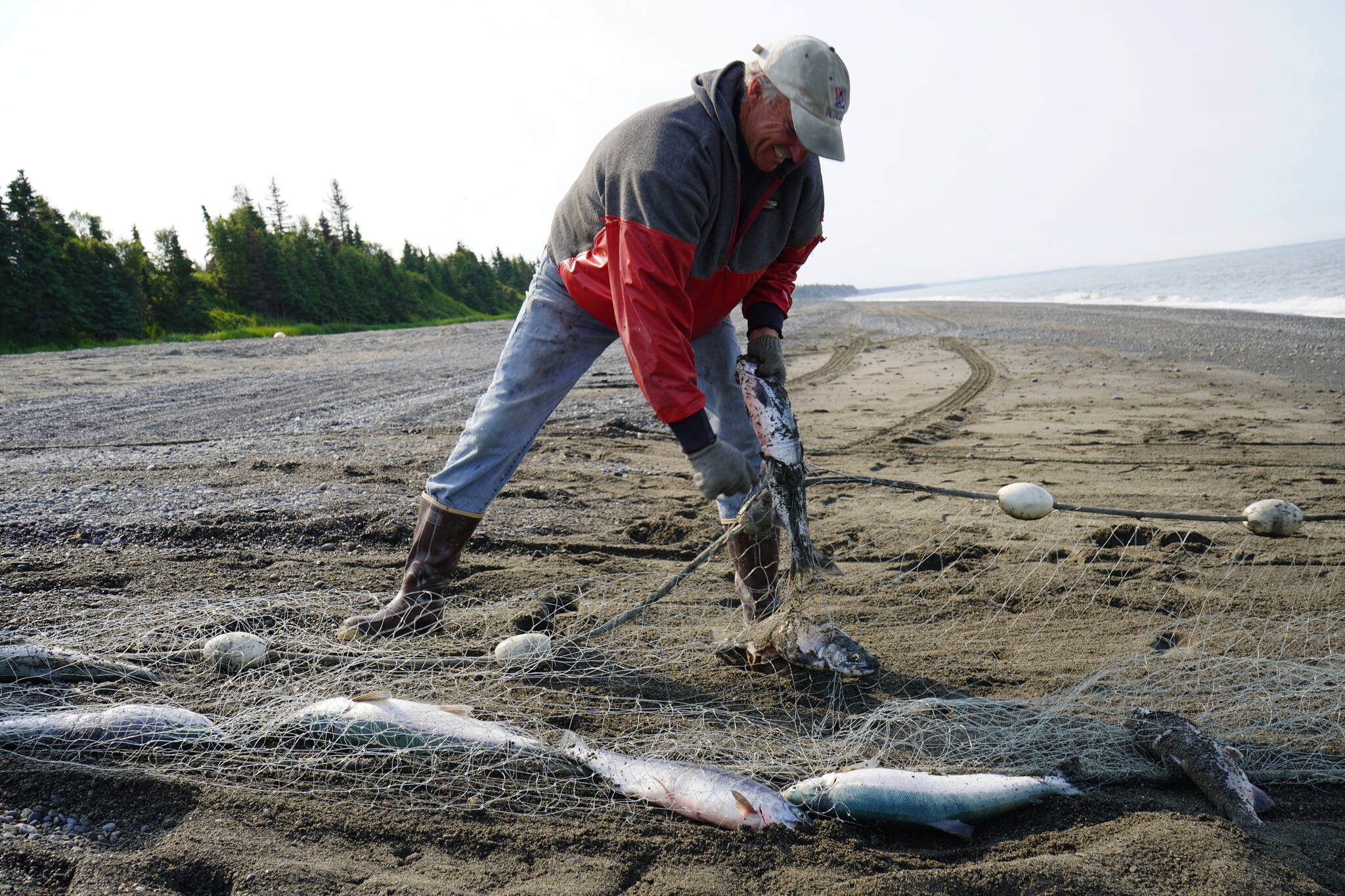The State Department of Fish and Game recently released a preliminary summary of results from a test of selective harvest setnet gear undertaken on the Kenai Peninsula this summer amid a full season closure of the east-side setnet fishery.
That test, according to a press release from the department in early July, was to assess a shallower net intended to better target “abundant” sockeye while reducing harvest on “weaker” kings. The study was conducted on a fish site owned by Gary Hollier down Kalifornsky Beach Road from July 8 to Aug. 7.
According to the data, 9,441 sockeye salmon were caught over 19 days of fishing. At the same time, 50 king salmon were caught in the nets. Of those, 20 were successfully released, four were “partial fish” seemingly eaten by other animals, and only six were “large king salmon” — those that are counted by the department.
Hollier said Monday that the test results so far “reinforce what a lot of setnetters have been saying.” He said when they use selective gear, they catch fewer kings. But, he said it’s also difficult to be certain how successful the shallower nets are when low abundance also means there are fewer kings in the water.
The test is intended to extend over three years, with work being done in later phases to try to map where in the water king salmon are moving. Hollier said that east-side setnetters don’t have time to wait, though, with the Board of Fisheries meeting to discuss Upper Cook Inlet topics like the Kenai River Late-Run King Salmon Management Plan early next year, then not again until 2027.
If existing policies aren’t changed to allow opportunity to setnetters, Hollier says they may never fish again.
The department only counts large king salmon, those longer than 34 inches. If fewer than 15,000 large king salmon are forecast to escape in the Kenai River, the east-side setnet fishery and the king salmon sport fishery are automatically closed.
It was that large king salmon number that Hollier was focused on Monday. He said that in a 19-day fishery, at the same time as around 9,400 target sockeye were harvested, only six large kings were killed. That means, he said, that the east-side setnet fishery can see restricted openings and catch hundreds of thousands of reds without impacting the king population.
He submitted a proposal to the board for their February meeting that would allow a limited opening with the shallower nets at times of lower abundance, but still greater than 13,500 large king salmon.
“I think it is a valid way forward,” he said.
But it still takes four votes from the board to get nets back in the water. Hollier’s proposal joins dozens targeting the Kenai River Late-Run King Salmon Management Plan, and he said he’s trying to find a way forward for the fishery in a “dire situation.” Until the king salmon population can recover, he said there’s opportunity in fishing restricted gear on restricted hours — “opportunity to see everyone in the black.”
Fish caught in the test fishery were sold by the state and all proceeds went to the department’s test fish fund.
The State Department of Fish and Game said Monday that though they had published the preliminary data, their official analysis is not ready. It is still being prepared for the Board of Fisheries meeting in February.
For more information about the test fishery, and to view the results, visit adfg.alaska.gov and find “2023 ADF&G Set Gillnet Study” in “News & Events.”
Reach reporter Jake Dye at jacob.dye@peninsulaclarion.com.

